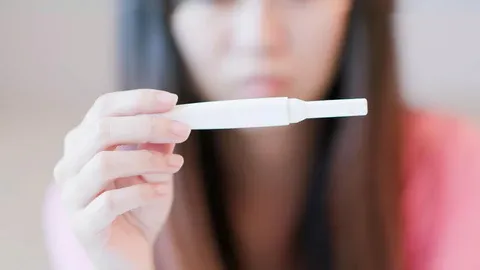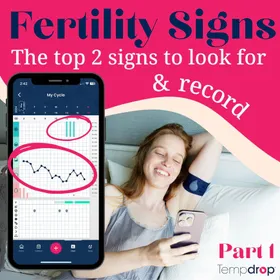Additional Fertility Signs to Look for & Record - Part 2
Published February 5, 2025.

There are several signs and symptoms you can record to track your cycle, but which matter? Will they all let you know you have ovulated successfully? Are some more important or accurate than others?
In part one of this series, we covered the two primary signs that can let you definitively narrow down your ovulation window.
These are:
- Basal Body Temperature
- Cervical Mucus
Now, let's explore more fertility biomarkers that you can track and find out how effective they are.
Cervical Position
The position (height) and feel (softness) of the cervix change before and after Ovulation. By checking daily, it is possible to learn to detect those subtle variations that indicate when the fertile window opens and closes. When a woman becomes proficient in checking and charting her cervix changes, she can use this as an additional reliable fertility sign. She can even track Cervical Position in place of Cervical Mucus if her mucus is scant or confusing. While it's not everyone's cup of tea, you may want to look into adding this observation to your daily tracking habits to help you feel more confident about identifying your cycle phases.
LH test strips
Luteinizing Hormone (LH) will surge or rise to trigger Ovulation. LH test strips (otherwise known as Ovulation predictor kits or OPKs) will measure the amount of LH in urine*. These tests can notify a woman of impending Ovulation, which, if successful, typically occurs in the 12-36 hours after a positive OPK test result.
Are LH or OPK tests always a reliable symptom of Ovulation?
In short, no, they aren't. While they can show you an increase in hormone levels, this doesn't guarantee the egg will be released. If Ovulation fails and you are relying too heavily on LH tests alone, you could miss your fertile window altogether. Multiple positive LH test results are more common in women with hormone imbalances, as in the case of those with PCOS, but can happen to anyone. Alternatively, some never see a positive test even when they judiciously test daily. Using LH tests can be beneficial to give you notice of an attempt to Ovulate but trying to use them as a primary tracking tool can lead to frustration and confusion. Adding them as a secondary sign along with BBT however, will take the guesswork out, as your temps will confirm if that attempt was successful. In part 3 of this series, we are going to check out more common symptoms that some women like to note in their charts and see where they fit when it comes to accurate fertility tracking. Don't miss it! *Some digital OPKs and fertility monitors also detect Estrogen along with LH. These can be more accurate.





